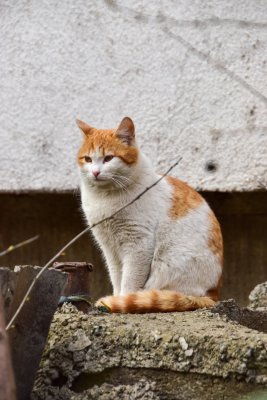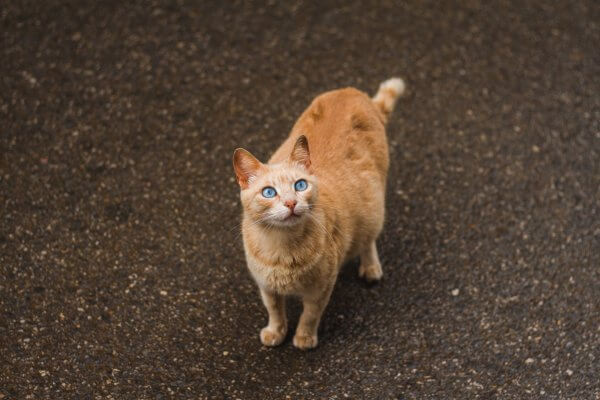Cats are remarkably self-sufficient, even when expecting kittens. But pregnancy still brings significant changes for cats that you may notice. An expecting cat often becomes less active and more vocal – you may hear her yowling at night as her motherly instincts grow.
A pregnant cat’s personality may seem moodier, too. Her appetite fluctuates, first increasing then decreasing as her belly swells with kittens. She loses interest in grooming, and her coat appears dull. You may spot a bald “pregnancy spot” on her head from changes in blood flow.
Determining If Your Cat is Pregnant
There are several efficient ways to determine if your cat is pregnant:
Ultrasound
An ultrasound a veterinarian performs is one of the most accurate ways to diagnose a cat’s pregnancy. The ultrasound can detect fetal heartbeats and visualize the developing kittens. This is usually done around 3-4 weeks into the pregnancy.
Blood Test
A blood test can detect a hormone called relaxin, which is only present during feline pregnancy. This test is accurate as early as 21-25 days into the pregnancy.
X-rays
Abdominal X-rays may reveal the developing skeletons of kittens. This method is most useful in the middle and later stages of pregnancy, around 45 days in.
Physical Signs

As the pregnancy progresses, your cat will start exhibiting physical signs:
- Enlarged or swollen nipples
- Weight gain and abdominal enlargement
- Increased appetite initially followed by a decrease
- Lethargy and increased sleep
- More vocalization, including meowing and crying
- Nesting behaviors like scratching and rooting
Cat Gestation Period
The normal gestation period for a cat is approximately 63-67 days or about 9 weeks. This is the amount of time from conception to delivery.
Domestic short-haired cats generally give birth between 63-65 days from the first day of mating. Other breeds, like Siamese, may go into labor a bit earlier at 62-64 days.
It’s important to monitor your pregnant cat closely as you near the due date. Preparations should be made for the pending birth.
Premature Labor

Sometimes, a cat may go into premature labor before completing a full 63-67 day gestation
. Signs of premature labor include:
- Bloody vaginal discharge
- Decreased appetite
- Low body temperature under 100°F
- Lethargy
- Hiding behaviors
Causes for premature labor include malnutrition, infections, genetics, hormones, or fetal death. Contact your vet immediately if you notice any signs of early labor. They can help stop the labor or prepare for emergency delivery of the kittens.
Caring for a Pregnant Cat
To keep your expecting cat healthy during pregnancy:
- Feed a high protein, meat-based diet with extra nutrients
- Ensure she’s drinking plenty of fresh water
- Provide a quiet, comfortable nesting area away from other pets
- Limit stress and vigorous play or exercise
- Gently brush her coat and trim her nails
- Take her to the vet for regular checkups
Make sure to monitor food intake and contact your vet if you notice a severely depressed appetite or abnormal behaviors. Routine veterinary care is important during this delicate time.
Kittens Growing Up
Kittens rely on their mother’s milk for the first 5-6 weeks of life. They should stay with their mom until at least 8 weeks old, though many cats keep their kittens until 12-16 weeks.
By 6-8 weeks, kittens are eating solid food well but still nursing occasionally. They are very active and playful at this age. Kittens are typically weaned fully by 8-12 weeks old.
Proper nutrition, socialization, training, and veterinary care during these early months are critical for raising happy, healthy cats. Be patient – with nurturing and time, your kittens will grow into wonderful adult feline companions.
When to Breed Again
It’s best to allow your cat at least 3-4 months after weaning her kittens before breeding again. This gives her body ample time to recuperate and regain normal condition fully. Ensuring she is healthy, active, and maintains a normal weight is important prior to another pregnancy.
Back-to-back litters spaced too closely together can deplete a cat’s nutrient stores and cause complications. Seek your veterinarian’s guidance on the ideal time to resume breeding based on your cat’s unique health status. With proper preventative care between litters, your cat can enjoy many healthy pregnancies during her lifetime.

Final Tips
- Record predicted due dates and mark your calendar as the date nears.
- Prepare a birthing area with soft bedding in a quiet room.
- Keep emergency vet contacts on hand in case of early labour
- Know the signs of labour starting and how to assist if needed.
- Have supplies ready for mom and feeding newborn kittens.
With preparation and vigilance, you can help smooth your cat’s pregnancy while awaiting the joy of adorable kittens! Stay tuned into her health and behaviors as you count down the days to her due date.


